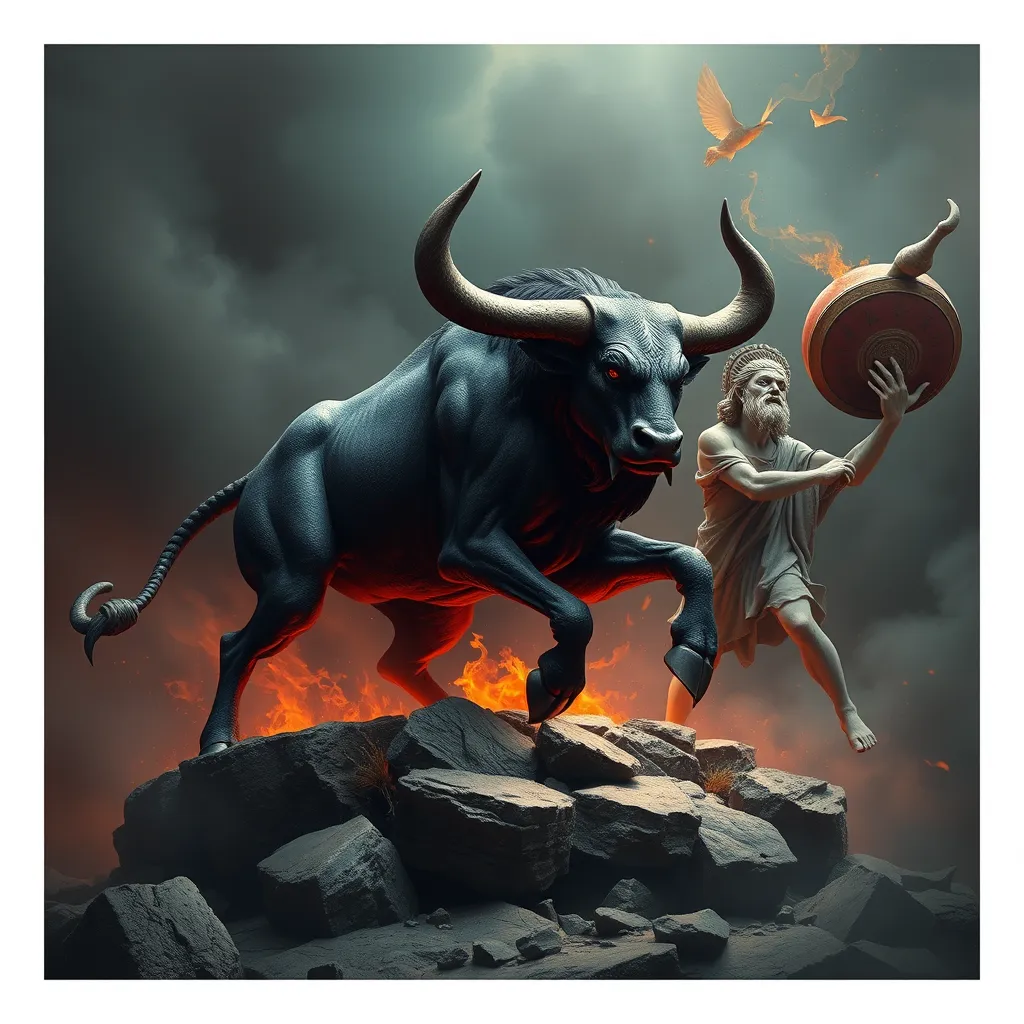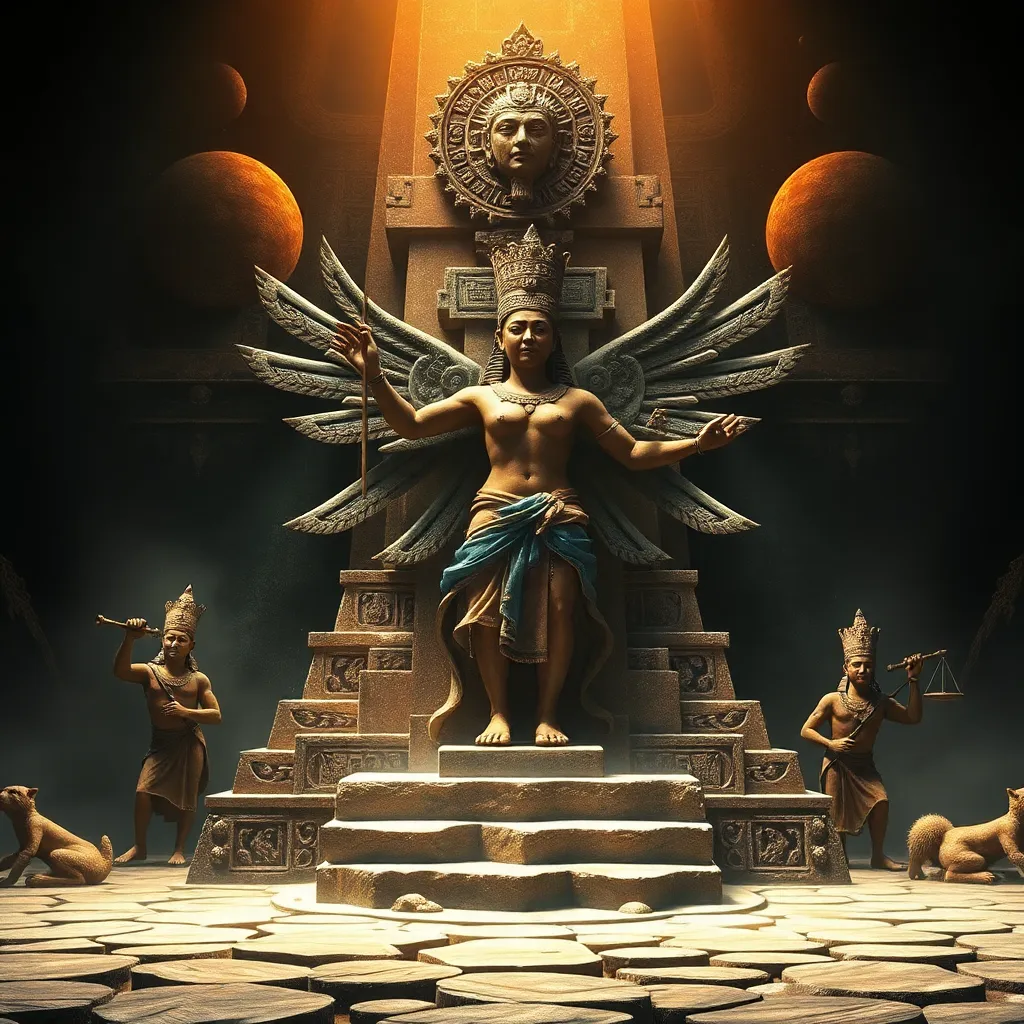Anubis: Origins, Evolution, and Iconography of the Jackal God
I. Introduction
Anubis, one of the most recognizable figures in ancient Egyptian mythology, is often depicted as a jackal or a man with a jackal’s head. As the god associated with mummification and the afterlife, Anubis held a significant place in Egyptian culture. His role was not just limited to overseeing funerary practices; he was believed to protect the dead and guide them through the treacherous journey to the afterlife. This article aims to explore the origins, evolution, and iconographic representations of Anubis, shedding light on his profound impact on ancient Egyptian beliefs and practices.
II. Historical Origins of Anubis
The historical origins of Anubis can be traced back to the pre-dynastic period of ancient Egypt, with some of the earliest mentions found in archaeological findings. The god’s representations date back to around 3000 BCE, indicating his long-standing significance in Egyptian mythology.
A. Earliest mentions and archaeological evidence of Anubis
Evidence of Anubis can be found in ancient texts and artifacts, such as:
- The Pyramid Texts, which mention his protective role over the deceased.
- Artifacts from tombs that depict him in various forms, underscoring his importance in funerary rites.
B. The significance of the jackal in ancient Egyptian culture and beliefs
The jackal, a scavenger often seen in cemeteries, was closely associated with death and the afterlife. This connection is likely why Anubis, as a jackal deity, became a symbol of protection and guidance for souls navigating the realm of the dead.
C. Anubis’ role in pre-dynastic and early dynastic periods
In the pre-dynastic and early dynastic periods, Anubis was primarily worshipped as a local deity. His role gradually expanded as the significance of funerary practices grew, establishing him as a key figure in the pantheon of Egyptian gods.
III. Evolution of Anubis’ Role in Egyptian Mythology
As Egyptian mythology evolved, so did the role of Anubis. He transitioned from a local deity tied to specific regions to a national symbol recognized throughout Egypt.
A. Transition from a local deity to a national symbol
With the unification of Upper and Lower Egypt, Anubis became more widely revered, taking on a central role in state funerary practices and the protection of pharaohs.
B. Changes in myths and stories involving Anubis through different dynasties
Throughout various dynasties, the myths associated with Anubis evolved, reflecting the changing beliefs and practices of the time. His stories often emphasized his protective nature and his vital role in the judgment of the dead.
C. Relationship with other deities, particularly Osiris and Isis
Anubis is frequently depicted alongside Osiris, the god of the afterlife, and Isis, the goddess of motherhood and magic. His relationship with these deities highlights his importance in the resurrection and judgment processes.
IV. Anubis’ Function in Funerary Practices
Anubis’ primary function revolved around funerary practices, where he served as the protector of the dead and a guide to the afterlife.
A. Role as the protector of the dead and guide to the afterlife
As the guardian of graves, Anubis was believed to safeguard the deceased from malevolent spirits. He guided souls through the Duat, the underworld, ensuring they reached their final destination.
B. Description of rituals and ceremonies involving Anubis
Rituals involving Anubis often included:
- Embalming ceremonies, where priests invoked Anubis’ protection.
- Funeral rites that included offerings to Anubis to ensure the deceased’s safe passage.
C. Significance in the process of mummification and tomb preparation
Anubis played a crucial role in the mummification process, overseeing the preservation of the body, which was essential for the soul’s survival in the afterlife. Tombs were often adorned with images and inscriptions dedicated to Anubis to invoke his protection.
V. Iconography of Anubis
The iconography of Anubis is rich and varied, reflecting his complex role in Egyptian mythology.
A. Common representations of Anubis in art and sculpture
Anubis is typically depicted as a man with a black jackal head, symbolizing his association with death and the afterlife. His black color represents the fertile soil of the Nile, associated with rebirth and regeneration.
B. Symbolism of the jackal and its association with death and protection
The jackal’s scavenging behavior linked it to death, while its guardianship of graves positioned Anubis as a protector of the deceased.
C. Variations in iconography across different periods and regions
Throughout history, Anubis’ iconography has evolved, with variations seen in:
- Different artistic styles across dynasties.
- Regional interpretations that reflect local beliefs.
VI. Anubis in Popular Culture
In modern times, Anubis has found a place in popular culture, appearing in various forms of media.
A. Depictions of Anubis in modern literature, film, and video games
From novels to blockbuster films and video games, Anubis is often portrayed as a powerful figure, reflecting the fascination with ancient Egyptian mythology.
B. Influence of Anubis on contemporary interpretations of ancient Egyptian mythology
Anubis’ character has influenced contemporary portrayals of death and the afterlife, often blending ancient beliefs with modern narratives.
C. The resurgence of interest in Anubis in modern spiritual practices
As interest in ancient cultures grows, Anubis has gained recognition in modern spiritual practices, often revered for his associations with protection and guidance.
VII. Comparative Analysis with Other Deities
When examining Anubis, it is insightful to compare him with other deities associated with death in various cultures.
A. Similarities and differences between Anubis and other death deities (e.g., Hades, Charon, and Thanatos)
While all these deities oversee aspects of death and the afterlife, their roles and representations differ significantly. Anubis is unique in his protective and guiding nature, contrasting with the more punitive roles of some Greek deities.
B. Exploration of universal themes of death and the afterlife across cultures
Anubis, like many death deities, embodies universal themes such as judgment, protection, and the journey after death, showcasing the shared human experience of grappling with mortality.
C. Anubis’ unique contributions to the understanding of ancient Egyptian beliefs
Anubis provides a unique lens through which to view ancient Egyptian beliefs about death, emphasizing the importance of protection and preservation in achieving a successful afterlife.
VIII. Conclusion
In summary, Anubis stands as a significant figure in ancient Egyptian culture and mythology. His role as a protector of the dead and guide to the afterlife highlights the Egyptians’ intricate beliefs surrounding death and the afterlife. The enduring legacy of Anubis is evident not only in historical contexts but also in contemporary culture, where he continues to captivate and inspire. As we reflect on the importance of Anubis, we gain insight into the profound ways ancient beliefs continue to resonate in our modern world.
![]()


